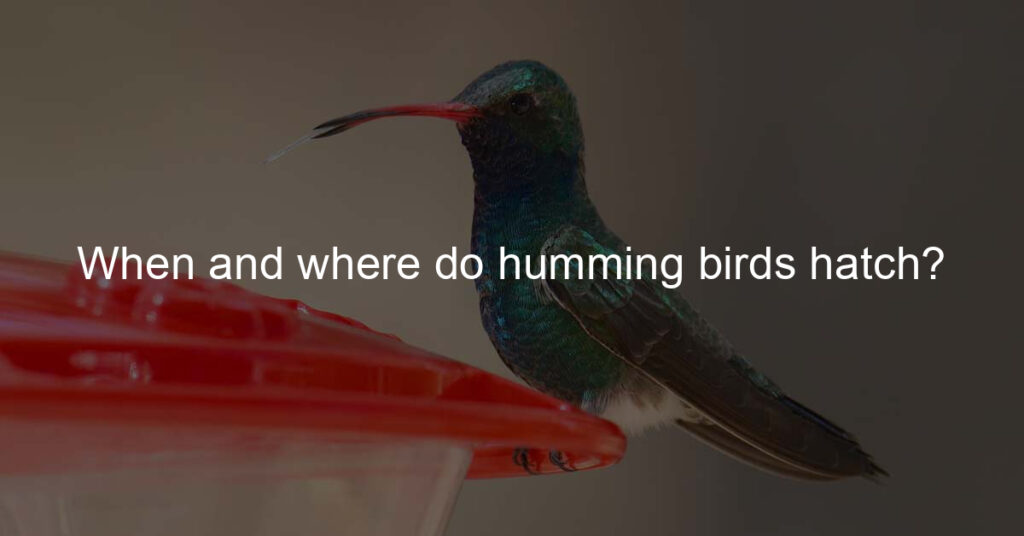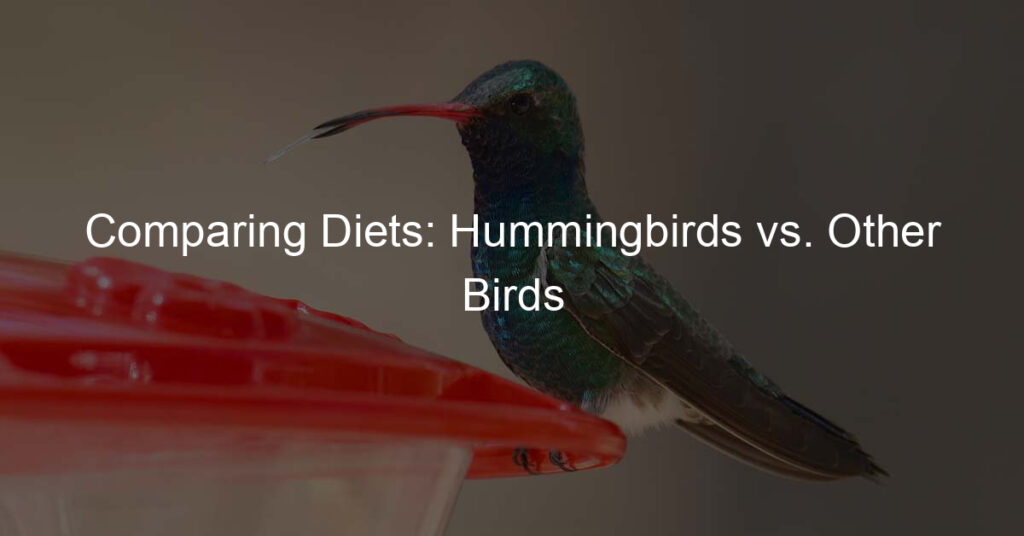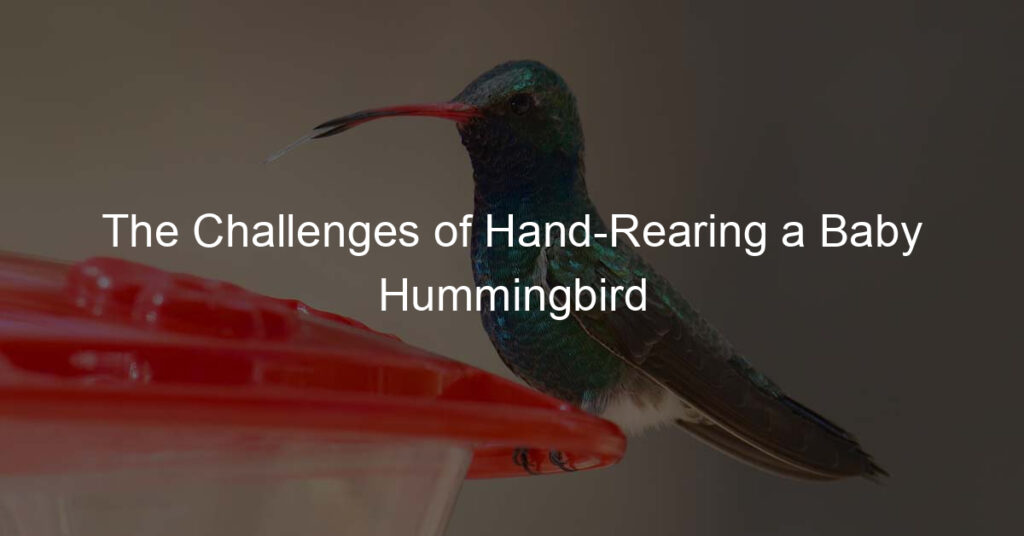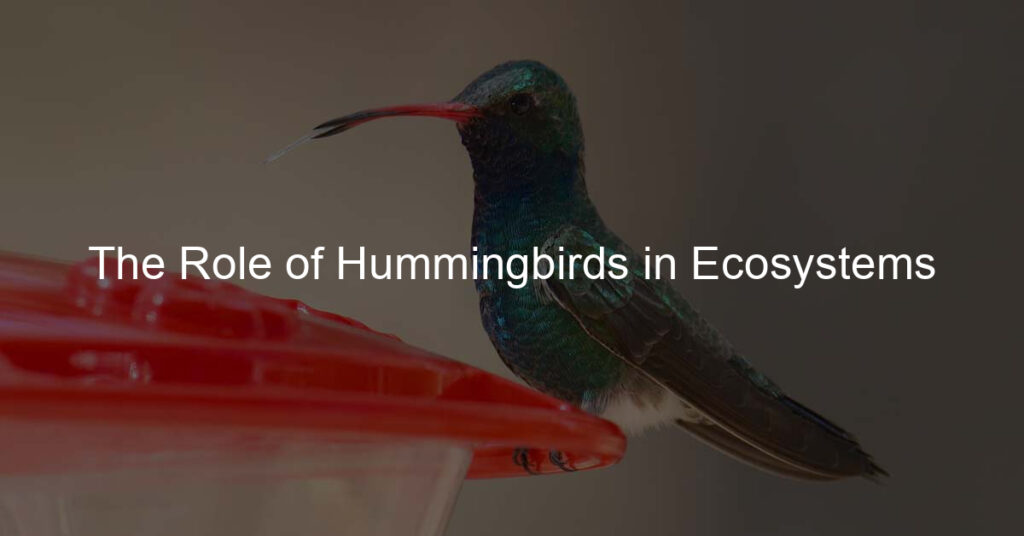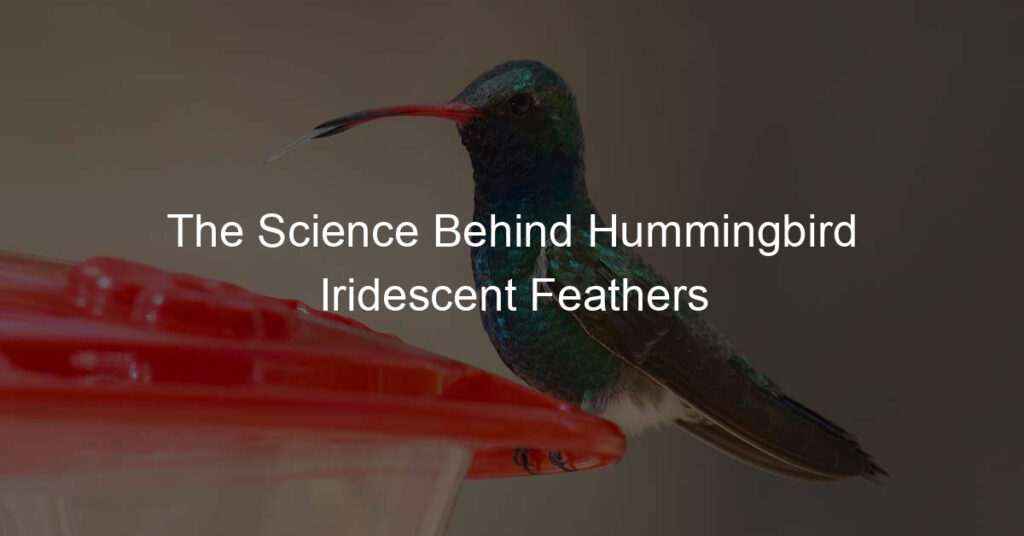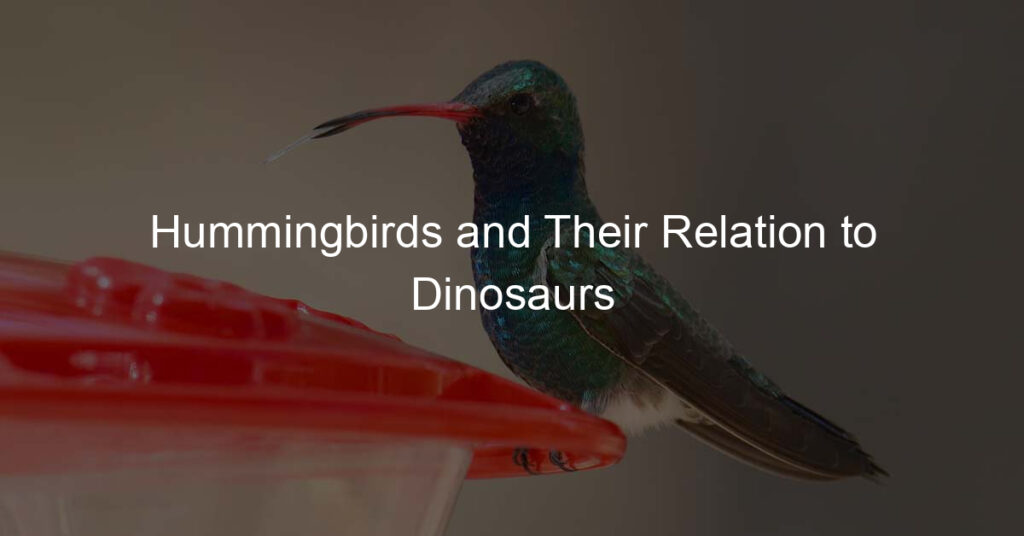Have you ever wondered when and where hummingbirds hatch? If so, you’re in luck! In this blog post, we’ll be exploring the answer to that question. So keep reading to learn more about these amazing creatures!
How much time does it take for a hummingbird egg to hatch?
It is quite an amazing process to observe as a hummingbird egg goes from an unpromising blob of pale blue to a newly hatched baby bird in a matter of 16 to 23 days. Hummingbird eggs are very small, about the size of a jellybean or a Tic-Tac candy, making them one of the smallest eggs laid by any bird. In the nest, heat from the parent birds will start to incubate the egg, and larvae begin to grow.
The internal composition of the egg changes as it absorbs water and energy sources for growth until all energy reserves are depleted and it’s time for hatching. All throughout this development period, incubation temperatures need to be steady; any drastic temperature change, either way, can prevent successful hatching.
After 16-23 days, parents will help peck away at any remaining pieces of shell that have not already been broken off by the chicks growing beak before eventually taking its first steps into the world outside the nest.
How are hummingbirds born?
Hummingbirds are one of the smallest bird species, and the process of their birth is truly fascinating. The female hummingbird will build a canary-sized nest—composed of downy feathers, cotton, and spider silk—which allows her to lay two small eggs. The eggs incubate for about two weeks, after which the baby hummingbirds hatch. Immediately following hatching, these tiny chicks require continual nourishment from their mother and also rely on stored nutrients in the form of a yolk sac attached to them during hatching.
Although still covered with downy feathers, they are unable to fly until they are approximately four weeks old and have almost doubled in size. At this stage, they may be ready to leave the nest and begin their own adventures!
Where do hummingbirds hatch?
Hummingbirds are some of the most magical creatures that can be found in any backyard. Every year, hummingbirds make their journey far and wide to lay eggs where they will safely hatch and continue on their own path. Hummingbirds typically lay their eggs anywhere from Western North America all the way to Argentina and Chile, typically choosing areas with a moderate climate.
They tend to prefer warm temperatures, making settled woodlands along or near mountain slopes perfect areas for hatching. Placing nests in close proximity to trees gives them the safety and coverage they need to keep an eye out for danger. Although small in size, these magnificent little birds put a lot of effort into finding the perfect place for their eggs to be safe until the hatching season.
How do hummingbirds hatch?
Hummingbirds are fascinating creatures and the way they hatch is even more curious. The process begins with two white eggs, about one-and-a-half times larger than those of a regular songbird, being laid in the hummingbird’s nest by the female. Both parents then take on responsibilities for developing their chicks.
The mother keeps her eggs warm with her feathers while the father feeds her to sustain her feather warmth and energy, ensuring that she has enough food to further nourish their eggs as they begin to hatch. After 12-15 days have passed since laying, both eggs will have hatched into extremely tiny baby hummingbirds.
Despite being so small and fragile when first born, baby hummingbirds develop quickly due to their high metabolisms and leave the nest only 21 days after hatching!
Do hummingbirds return to where they were hatched?
Despite their miniature size, hummingbirds are some of the most fascinating creatures in nature. It’s believed by many that adult hummingbirds have a remarkable ability to migrate back to the same area they hatched. This amazing navigation feat is even more impressive considering they can fly up to 25 miles per hour and migrate over thousands of miles each year!
Studies have shown that some hummingbird species will use visual or thermal cues to determine direction, while others will rely on celestial guidance such as star systems and landmarks. In short, we may never fully understand why hummingbirds demonstrate this incredible navigational behavior, but it is certainly something worth admiring.
What do hummingbirds’ nests look like?
Hummingbirds are known to build an interesting variety of nests. These nests range in size, and shape, and look quite different from other birds’ nests. Typically, hummingbird nests measure just 1 – 2 inches wide and 1 – 2 inches deep. They are made of a combination of moss, lichen, and other bits of vegetation that act as base materials for the nest and are lined with soft plant down for warmth and insulation.
In addition to their unique size and construction material, hummingbird nests have a characteristic teardrop shape. They are often found tucked away in a tree-shaded area or hidden within the foliage of vines and shrubs. Such discretion often makes it difficult to spot a hummingbird’s home even when you are close by!
Summary
It is quickly evident that the wide variety of hummingbird species each have their own unique life cycles and nesting habits. Even so, each of these species plays an important part in our world’s growing population of birds. As we take the time to observe them and learn about the wonderful way in which they live, it is clear that hummingbirds are fascinating creatures that deserve respect for all that they do for us.
From helping pollinate flowers to feeding on mosquitoes, these amazing little birds do a lot in our world! So, if you come across a hummingbird hatching from its eggs or nesting during the season, make sure you take time out to appreciate this graceful creature and all they contribute to our ecosystem!

